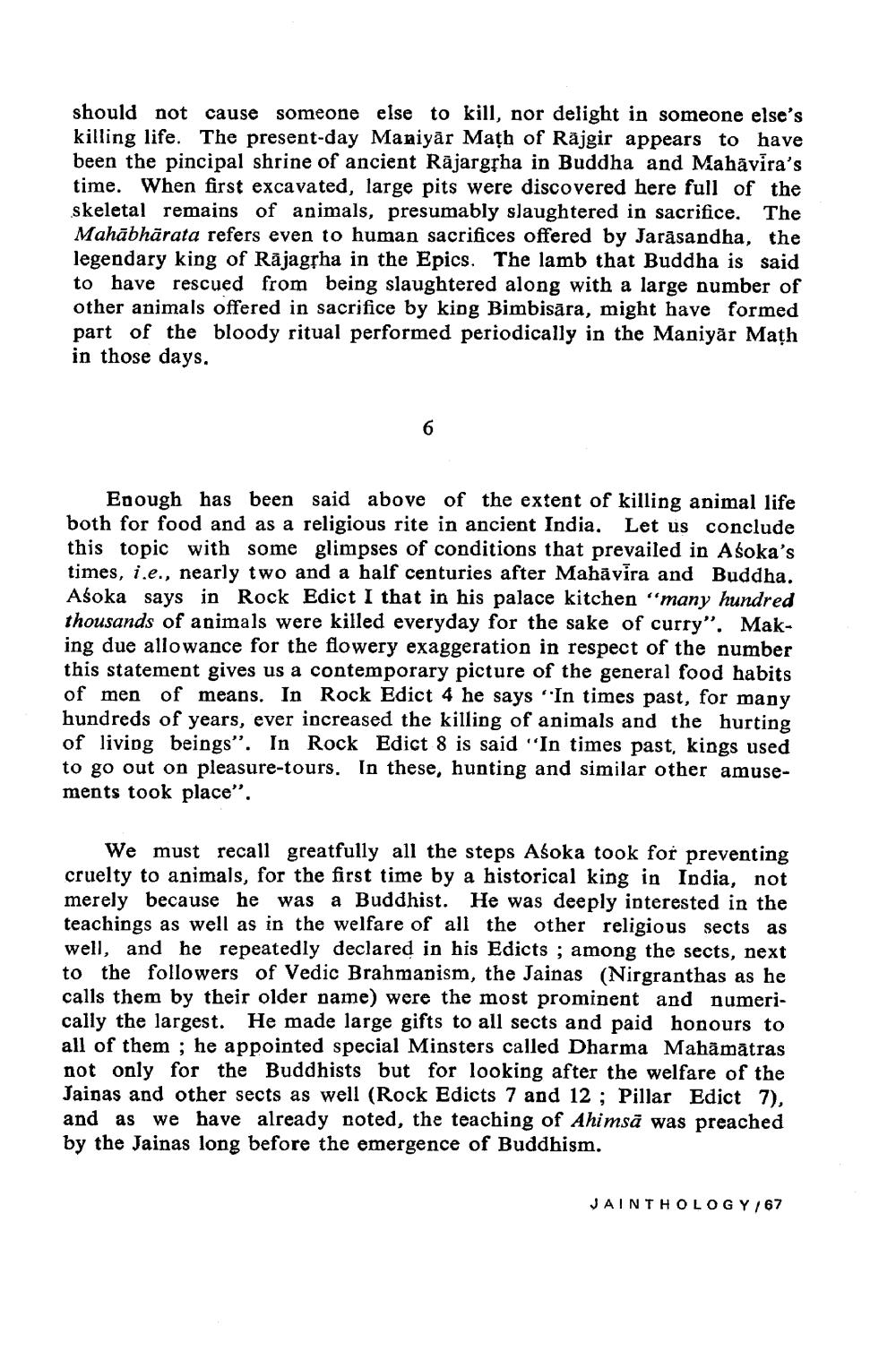________________
should not cause someone else to kill, nor delight in someone else's killing life. The present-day Maniyār Math of Räjgir appears to have been the pincipal shrine of ancient Rājargrha in Buddha and Mahavira's time. When first excavated, large pits were discovered here full of the skeletal remains of animals, presumably slaughtered in sacrifice. The Mahābhārata refers even to human sacrifices offered by Jarasandha, the legendary king of Rājagrha in the Epics. The lamb that Buddha is said to have rescued from being slaughtered along with a large number of other animals offered in sacrifice by king Bimbisāra, might have formed part of the bloody ritual performed periodically in the Maniyar Math in those days.
Enough has been said above of the extent of killing animal life both for food and as a religious rite in ancient India. Let us conclude this topic with some glimpses of conditions that prevailed in Asoka's times, i.e., nearly two and a half centuries after Mahāvira and Buddha. Asoka says in Rock Edict I that in his palace kitchen "many hundred thousands of animals were killed everyday for the sake of curry”. Making due allowance for the flowery exaggeration in respect of the number this statement gives us a contemporary picture of the general food habits of men of means. In Rock Edict 4 he says "In times past, for many hundreds of years, ever increased the killing of animals and the hurting of living beings". In Rock Edict 8 is said "In times past, kings used to go out on pleasure-tours. In these, hunting and similar other amusements took place”.
We must recall greatfully all the steps Asoka took for preventing cruelty to animals, for the first time by a historical king in India, not merely because he was a Buddhist. He was deeply interested in the teachings as well as in the welfare of all the other religious sects as well, and he repeatedly declared in his Edicts ; among the sects, next to the followers of Vedic Brahmapism, the Jainas (Nirgranthas as he calls them by their older name) were the most prominent and numerically the largest. He made large gifts to all sects and paid honours to all of them ; he appointed special Minsters called Dharma Mahāmātras not only for the Buddhists but for looking after the welfare of the Jainas and other sects as well (Rock Edicts 7 and 12 ; Pillar Edict 7), and as we have already noted, the teaching of Ahimsā was preached by the Jainas long before the emergence of Buddhism.
JAINTHOLOGY, 67




